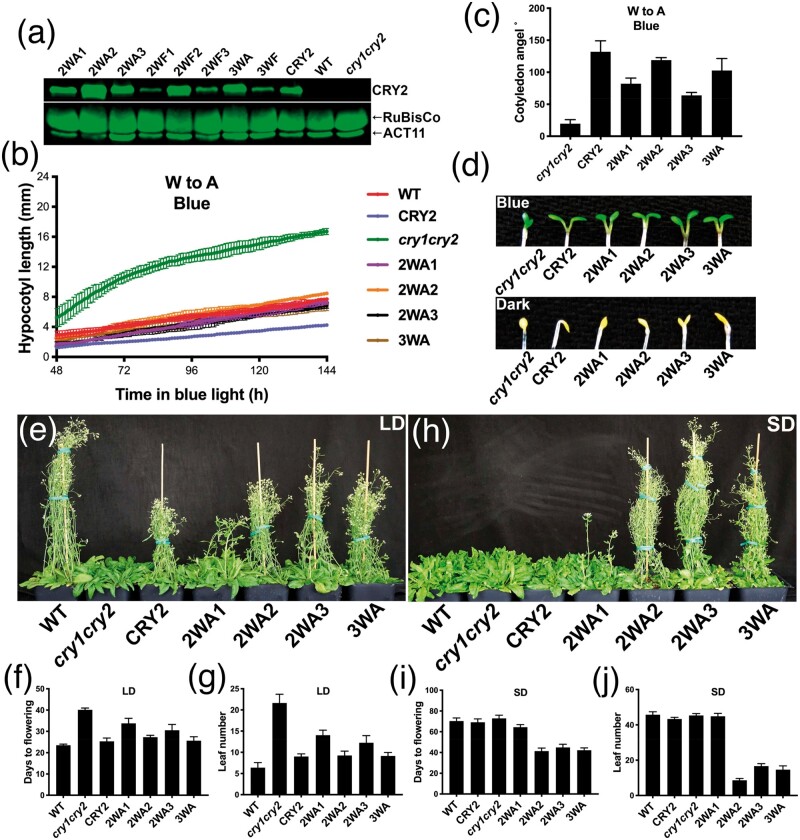Fig. 1.
Analyses of double and triple mutants of the Trp-triad residues of CRY2. (a) Immunoblots showing expression of double and triple Trp-triad mutants of the GFP-CRY2 fusion protein. (b) Kinetics analysis of elongation of seedlings germinated and grown under the blue light (15 µmol m−2 s−1). Seedlings are imaged 48 h after germination at the frequency of one image per hour for another 96 h (n = 3). (c) Angles between the two cotyledons were measured from the images taken at 114 h after germination in B (n = 3). (d) The cotyledon unfolding phenotype of 6-day-old seedlings grown in blue light (20 µmol m−2 s−1) (upper) or darkness (lower). (e–j) Images of 40 (e)- or 60 (h)-day-old plants grown in LD (16-h day/8-h night) or SD (8-h day/16-h night). Days to flowering (f, i) and rosette leaf number (g, j) at flowering are shown (n ≥ 8). The wild-type (WT) and transgenic plants constitutively expressing the “wild-type” GFP-CRY2 or the double (2WA1, 2WA2, 2WA3) or triple (3WA) mutants of GFP-CRY2 fusion proteins in the cry1cry2 mutant background are indicated (see supplementary table S1, Supplementary Material online, for more detailed information). Bars in b, c, f, g, i and j indicates SD of the mean.

